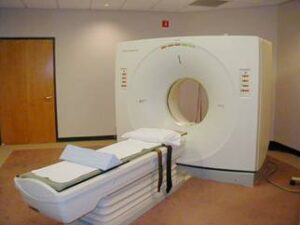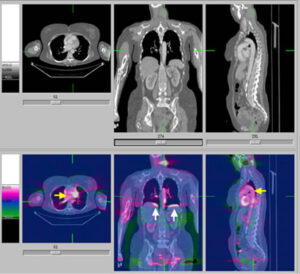There are a number of diagnostic imaging modalities used to stage melanoma.
Staging is the process by which your doctor finds out if the melanoma is confined to one place or whether it has spread. This is very important information for planning treatment and working out your prognosis.
These include Ultrasound, CT scans, MRI scan and PET scan. Each of these scans give slightly different information and you will be advised which is appropriate for your situation. Plain x-rays are seldom useful in the management of melanoma. Very occasionally your doctor will recommend a bone scan.
Lymphosyntigrapy or lymph node mapping is discussed in the section on sentinel node mapping.






